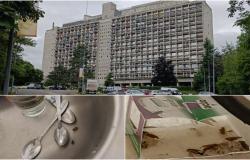They are a few millimeters long, and are especially the sworn enemy of fruit flies. This is a species of wasp, the ganaspis kimorum. INRAE scientists released around a hundred of them this Tuesday in a tree farm in Vesseaux, in Ardèche. It is part of a program between the scientific organization and the Ardèche Chamber of Agriculture, the objective of which is to regulate the population of drosophila flies.. These flies have been destroying the department’s cherry harvests for several years, to the point of threatening the industry with extinction. And an experiment is being conducted on two Ardèche plots, in Vesseaux and Désaignes.The Ganaspis wasp has the particularity of laying eggs in the larvae of the Drosophila suzukii flies.explains Lucia Latré, from the chamber of agriculture. It is specific to this particular fruit fly, it will not lay eggs in the larvae of other fruit flies. And this laying will interrupt the cycle of the flies.“
A series of tests with first results expected in 6 months
These tests are not the first carried out in the department. Six months agothe National Institute for Agricultural, Food and Environmental Research (INRAE) had already introduced several hundred of these wasps onto a farm in Désaignes, also in Ardèche. The first objective of this introduction of a species originating from Korea is to see if the insect can adapt to the Ardèche climate.before seeing if it is effective against the fruit fly. Then, the chamber of agriculture will be able to continue to introduce ganaspis, it hopes to do so in around sixty farms in the department within 3 years.
Biological control of drosophila suzukii: Introduction of ganaspis in Ardèche – Episode 2
It must be said that the cherry harvests of the coming years are clearly threatened. The fruit fly Drosophila suzukii bores a hole, invisible to the naked eye, to lay its larvae, which then feed on the pulp of the fruit, making it unfit for consumption.The damage rate varies from one farm to another but can reach 100%. The situation has worsened since the accidental introduction of the species into Europe in 2008. This poses major risks for the department’s arboriculturists.The main risk is the cessation of production, that is to say that we will not have any cherries to sell.believes Lucia Latré. One year passes, two years, it starts to be complicated, but after a certain number of years of recurrence, the producers will stop the cherry since there will be no production.“
Cherry is not the only victim of the fruit fly which also attacks blackberries, blueberries, strawberries and raspberries.






